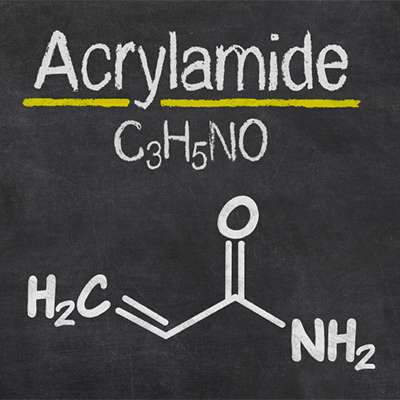
What is Acrylamide?
Acrylamide is a chemical that naturally forms in starchy food products during every-day high-temperature cooking. Studies in Laboratory Animals have suggested that acrylamide may be carcinogenic, so there has been some public concern since 2002 when Swedish studies reported that acrylamide was formed during the frying and baking of potato and cereal products.
But how much of a concern is it?
Acrylamide is considered a genotoxic carcinogen because of its potential to damage DNA (the genetic material in our cells) and cause cancer.
At very high levels, such as a result of industrial occupational exposure, acrylamide is known to cause nerve damage, but is far less clear what the risks are from acrylamide in food. Uncertainties in exposure and possible exposure to sources other than food (such as tobacco smoke) mean that we cannot draw conclusions about the cancer risks of acrylamide in foods.
Indeed in terms of human studies, evidence of increased risk of developing cancer in association with dietary exposure to acrylamide is limited and inconsistent.
The European Food Safety Authority in their risk assessment of acrylamide in food concluded that for adults, current levels of dietary exposure to acrylamide are not a health concern, although there may be more of a concern for very high consuming young children, and there should be some extended monitoring and surveillance. In any case, on the basis of safety, no government agency has advised its population to stop eating starchy foods. They form an important part of government healthy eating guidelines for a balanced diet and there is no need at all to take these foods off the menu.
However because there are uncertainties, as a precautionary approach, the Foods Standards Agency believe that exposure should be kept as low as reasonably practical (or ALARA – As Low As Reasonably Achievable).
What foods contain dietary acrylamide?
Amongst the products contributing to acrylamide intake in the diet are potatoes and bread, which can be increased when heating to high temperatures – so the browner your chips are or the darker the toast, the more acrylamide is formed. Cooking choices can therefore have an impact on the levels of acrylamide we are exposed to.
Tips to reduce acrylamide in foods are listed below, but it is important that any manufacturer’s instructions for frying or oven heating foods should still be followed carefully.
- Cook foods to light rather than dark colours;
- Serve toast to the lightest acceptable;
- Fry foods at lower temperatures;
- Blanch potatoes before frying them;
- Avoid overheating oils and fats;
- Don’t store potatoes in the fridge;
- Avoid bruised potatoes.
Why not take a pragmatic approach and minimise acrylamide by using these simple tips?



